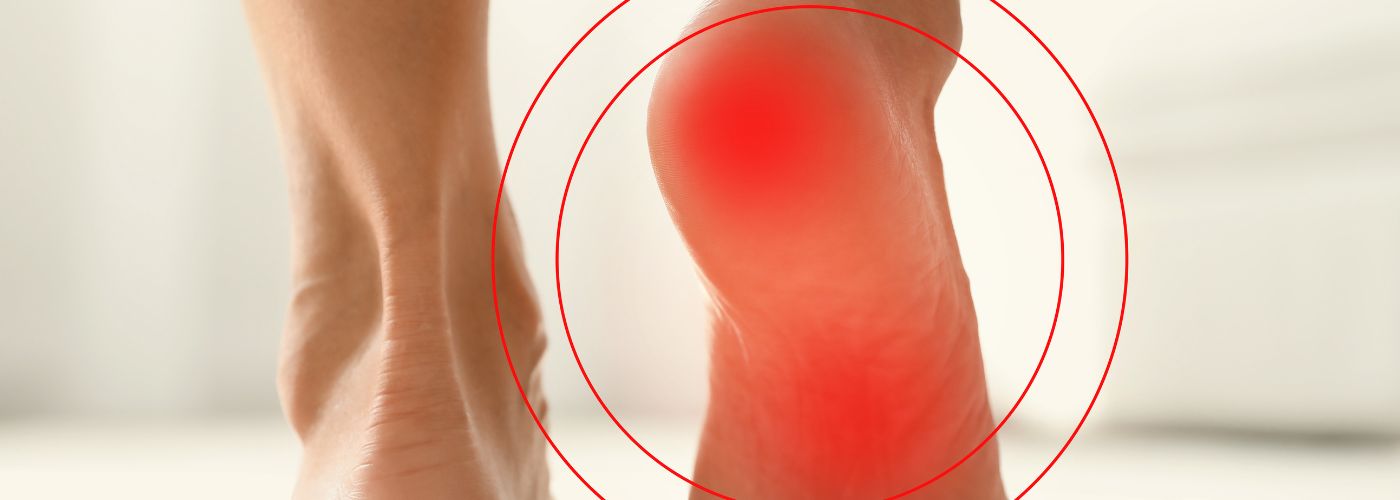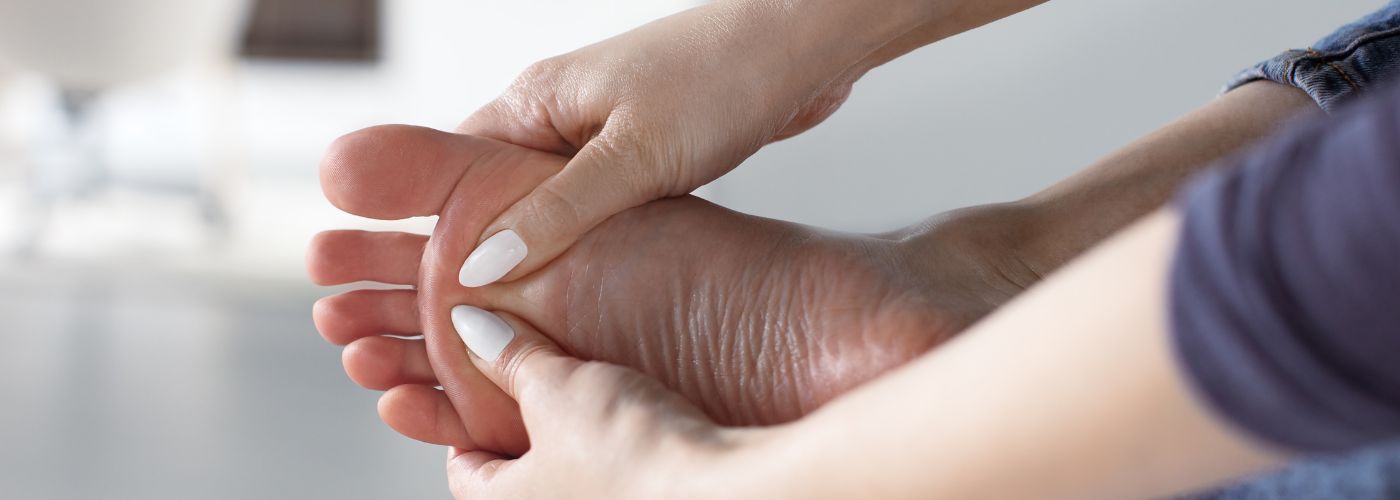Are you tired of constantly dealing with foot pain that just won’t seem to go away? Whether it’s from standing all day at work, exercising too vigorously, or simply the wear and tear of daily life, foot pain can be incredibly frustrating and debilitating. But what if there was a simple solution that could provide relief right at your fingertips – or rather, under your feet?
Enter the world of TENS (Transcutaneous Electrical Nerve Stimulation) therapy, a non-invasive and drug-free treatment option that has been gaining popularity for its ability to alleviate various types of pain. In this article, we’ll discuss the art of optimal TENS unit pad placement for foot pain – a technique that can make all the difference! in effectively targeting those troublesome areas. So kick off your shoes, sit back, and prepare to discover how strategic pad placement could have you walking on air in no time!
How TENS Unit Pads Work For Foot Pain
TENS unit pads for feet are a game-changer when it comes to managing foot pain.
These pads work by sending electrical impulses to the nerve fibers in the affected area, effectively blocking the pain signals from reaching the brain. This process triggers a natural response in the body, releasing endorphins that act as natural painkillers.
One of the key benefits of using TENS unit pads for foot pain is their targeted approach. Unlike traditional pain medications that can have systemic effects, TENS units allow for precise application directly to the source of discomfort.
Additionally, these pads are non-invasive and can be easily used at home or on-the-go, providing convenient relief whenever needed.

Incorporating TENS unit pads into your foot pain management routine can offer a drug-free alternative with minimal side effects. By harnessing the power of electrical stimulation, these pads may provide a safe and effective solution for alleviating discomfort and promoting faster recovery.
Strategic TENS Unit Pad Placement for Foot Pain
Strategic placement of TENS unit pads is crucial for effectively targeting foot pain. When dealing with conditions like plantar fasciitis or neuropathy, placing the pads on the bottom of the feet can provide direct relief by stimulating the nerves in that area.
Additionally, positioning the pads along the sides and back of the heel can help alleviate pain associated with heel spurs or Achilles tendonitis.
For chronic foot pain that radiates up the leg, considering placing TENS pads on both the foot and calf muscles to target a larger area and provide more comprehensive pain management. Experimenting with different pad placements to find what works best for your specific type of foot pain is key to maximizing the benefits of TENS therapy.
Ultimately, customizing your pad placement based on your individual symptoms and needs will lead to optimal results in managing foot pain effectively.
How Long Should TENS Unit Foot Therapy Be?
The duration of the sessions can vary depending on individual needs and preferences. Some experts recommend starting with shorter sessions of around 15-30 minutes and gradually increasing the time as needed.
However, others suggest that a longer session of up to 60 minutes may be beneficial for chronic foot pain.
Ultimately, the key is to listen to your body and adjust the duration of the therapy based on how you are feeling. It’s important to pay attention to any discomfort or irritation during the session and stop if necessary.
Consulting with a healthcare professional or physical therapist can also provide guidance on the ideal duration for your specific condition.
Choosing The Best TENS Setting For Your Session
When using a TENS foot pad or a TENS slipper device for feet it’s important to understand which setting can be the best for you.
The intensity level should be adjusted based on your pain tolerance and the area being treated. Starting at a low setting and gradually increasing the intensity can help you find the right level for optimal pain relief.
Additionally, experimenting with different pulse frequencies and modes can also make a difference in the effectiveness of your TENS session.
Another important aspect to keep in mind is the duration of each session. It’s recommended to use TENS therapy for short intervals ranging from 15-60 minutes per session. This allows your body to effectively respond to the treatment without causing any discomfort or overstimulation.
Other Recovery Methods To Incorporate With TENS Therapy
In addition to using TENS therapy for pain relief, incorporating other recovery methods such as maintaining a healthy diet and prioritizing quality sleep can greatly enhance the overall effectiveness of your treatment.
A balanced diet rich in nutrients like anti-inflammatory foods can help reduce inflammation and promote healing in the body. By fueling your body with the right nutrients, you can support muscle recovery and optimize the benefits of TENS therapy.

Furthermore, getting an adequate amount of quality sleep is essential for the body’s natural healing process. During deep sleep stages, the body repairs tissues, produces growth hormone, and regulates inflammation levels. By ensuring you get enough restorative sleep each night, you can maximize the effects of TENS therapy by allowing your body to fully recover and heal from injury or chronic pain.
Prioritizing both a healthy diet and sufficient sleep alongside TENS therapy can create a synergistic approach to pain management and overall well-being!
Pros & Cons of Using TENS Units For Foot Pain
One of the key advantages of using a TENS unit for foot pain is its non-invasive nature. Unlike medications or surgical interventions, TENS units may provide relief through electrical stimulation, which can be more gentle on the body.
Additionally, TENS units are portable and can be used at any time, making them a convenient option for managing foot pain on the go.
On the other hand, some potential drawbacks of using TENS units for foot pain include limited effectiveness for certain individuals. While many people find relief with TENS therapy, others may not experience significant improvements in their symptoms.
Another downside to consider is that TENS units may not address the root cause of foot pain and simply provide temporary relief. In some cases, relying solely on TENS therapy without addressing underlying issues could lead to prolonged discomfort or delayed proper treatment.
It’s important to consult with a healthcare provider before using a TENS unit for foot pain to ensure it is appropriate and safe for your specific condition.

Related Stories
When Courage Takes Flight: Lessons From a Women’s Skydiving Record Attempt
Photo by Taylor Buffington (T-Buff) We went to Eloy, Arizona on a mission — to...
Nov
Sciatica: 1, LeBron: 0 (For Now)
File photo: LeBron James #6 of the Los Angeles Lakers. (Photo: Thearon W. Henderson /...
Oct
Pickleball vs. Tennis: The Science of Recovery
For years, tennis was the stand-in for movement: endurance, coordination, and power all at once....
Oct
5 Ways to Support Bone Strength with HiDow
World Osteoporosis Day (October 20) October 20 is World Osteoporosis Day, and chances are, you’ve...
Oct
FDA-Cleared Is a Flex. Here’s Why.
Pulling Back the Curtain You’ve seen it on boxes, on websites, in ads: FDA-cleared. It...
Sep
This Is Fibro. This Is Larry.
September is Pain Awareness Month. And we’re not here to give you medical definitions or...
Sep